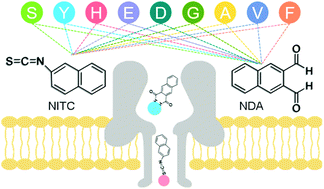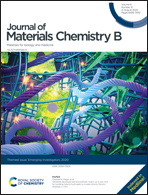Enabling nanopore technology for sensing individual amino acids by a derivatization strategy†
Abstract
Nanopore technology holds remarkable promise for sequencing proteins and peptides. To achieve this, it is necessary to establish a characteristic profile for each individual amino acid through the statistical description of its translocation process. However, the subtle molecular differences among all twenty amino acids along with their unpredictable conformational changes at the nanopore sensing region result in very low distinguishability. Here we report the electrical sensing of individual amino acids using an α-hemolysin nanopore based on a derivatization strategy. Using derivatized amino acids as detection surrogates not only prolongs their interactions with the sensing region, but also improves their conformational variation. Furthermore, we show that distinct characteristics including current blockades and dwell times can be observed among all three classes of amino acids after 2,3-naphthalenedicarboxaldehyde (NDA)- and 2-naphthylisothiocyanate (NITC)-derivatization, respectively. These observable characteristics were applied towards the identification and differentiation of 9 of the 20 natural amino acids using their NITC derivatives. The method demonstrated herein will pave the way for the identification of all amino acids and further protein and peptide sequencing.

- This article is part of the themed collection: Journal of Materials Chemistry B Emerging Investigators


 Please wait while we load your content...
Please wait while we load your content...